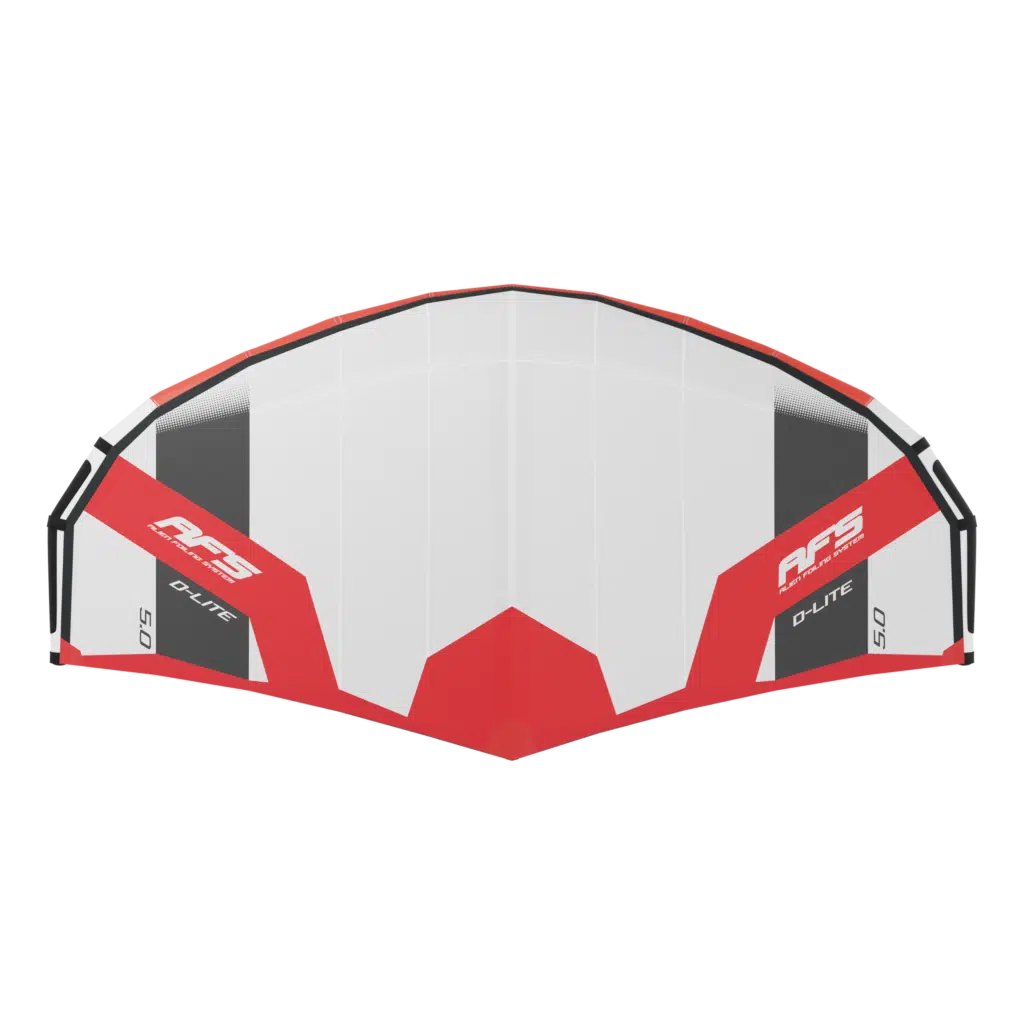Cart
Close
- No products in the cart.
Subtotal (excluding delivery costs)
€0,00
Repair and maintenance
Teams
Repair and maintenance
Teams
AFS product expert
We’re here to provide you with comprehensive answers and advice to help you make the right choice.

Wings with a boom offer a simple transition for windsurfers wishing to discover wing foiling but with a familiar feel. Wings with a boom give the rider infinite hand position options although they are generally a little heavier than a wing with handles, simply due to the boom being longer. Wings with handles, on the other hand, are very easy to grip and easy to manoeuvre, less can be more! There are two types of handles: Semi-rigid strap style handles and “hard” handles, both of which we have in our AFS wing range. In particular, semi-rigid handles let you enjoy the majority of benefits of hard handles without the drawbacks. It’s still a big debate between riding styles and personal preference. We asked our team rider Alan Fedit to introduce the differences, advantages and disadvantages.
The choice of wing depends on your riding style. For a beginner/intermediate level pilot, you’ll be looking for a versatile, easy-to-use, lightweight wing (D-LITE in our range). It’s a perfect freeride wing. On the other hand, if you’re looking for a pure-bred wing, you’ll be destabilized by this type of wing, hence the development of our WILD wing in our range, which constantly generates ultra power. It’s made for pure speed experience. In fact, Emeric, our 3D design engineer, has the UK speed record at over 30 knots over 500 meters! Similarly, if you’re more into surf, wave or light wind, check the wing’s weight. The lighter the wing, the better the sensations, as it’ll be very easy to freefly.
As with windsurfing, some wings offer the option of attaching a harness. This is particularly useful for long-distance practice or long rides, for example, to provide comfort and rest the arms. Specific belt harnesses are available with a buckle, often 3D-printed, so that you can hang on to your harness during your session.
When you buy a wing, make sure there are a bag and leash included.
You can find all our AFS gear directly in our partner shops or online.
Be ready to fly!
Check our our wingfoil guide: from zero to hero.
Foil And Co is the parent company of AFS. Its main mission is to relocate the production of our board sports equipment to France. Today, the company has 42 employees and is based in Brittany. We develop, produce and market under AFS. We also have 2 other brands, AHD and SEALION.
AFS was born within the AHD entity in 2009, with the launch of the first windsurf foil combo (board plus production foil). The historic model is the AFS-1, a foil dedicated to light wind freeride practice, with small sail surfaces (5.5m² in 10 knots of wind). Its field of use was later extended to SUP foils, with the Sealion range of boards, making it the first Stand Up Paddle-compatible foil on the market (2011). 2017 saw the launch of the AFS-2, a new-generation foil developed and manufactured in France. With it, AFS takes off and becomes a fully-fledged entity dedicated to foils. AFS’s vocation is to offer a more high-performance foiling experience, while retaining top-notch accessibility and stability to provide all riders with a safe ride thanks to full carbon construction. Thanks to our know-how and high standards, we are the leading foil manufacturer in France. At AFS, our customers feel they are listened to and supported in their choice.
AFS Advanced is a branch of AFS working on the development of an innovative experience. It’s a concentration of AFS know-how taken to the extreme. Being one step ahead and opening up new horizons in the world of foiling: that’s the role of AFS Advanced. It’s our way of concentrating our know-how and expertise to produce the most advanced designs. It’s the essence and the future of AFS. The essence of our know-how, pushed to the limits of its performance.
Our head office is located in Brittany, more precisely in Pencran, Finistère. We are located Espace Joseph Rolland – 29800 PENCRAN
All AFS foils are manufactured at our company in Pencran, France. All AFS Advanced boards are also made here. Some of our boards are made in Tunisia at Terminatech, as are our covers. Finally, although we haven’t yet managed to make the leap, our wings are now made in China, although all R&D is carried out in-house.
Depending on your size/practice, you’ll find different information on the sheets presenting our ranges directly. If you have the slightest doubt, our team of enthusiasts is at your disposal via the website chat (blue logo) at the bottom of your screen.
All materials shown are in stock. Delivery takes place within 48 hours of the order being placed.
All our products are packed in reinforced cardboard boxes. We ship all over the world, sometimes between distribution, private individuals, boats and planes… All our products are protected with various types of foam.
Don’t hesitate to contact us after 48 hours from the order date if you haven’t heard from us :). To do so, you can write to us directly on our chat page, where a team is at your disposal.
You can contact our dealer network or our ambassadors. We also organize AFS Days, where you can test all AFS equipment.
You can contact us directly via the website chat where a team of passionate practitioners is on hand to answer your questions. This is the blue icon at the bottom of your screen.
Secure payment in 3 or 4 instalments
Advice from enthusiasts
Satisfied or refunded
2 to 3-year warranty
Europe shipping
Foil and Co., All rights are reserved. ©2024
Hello
Choose your county
The WEB team will be operating with reduced staff from Friday, August 8 to Friday, August 22. However, production and deliveries will continue as usual! For any delivery tracking requests, please write to [email protected], for billing inquiries to [email protected], and for equipment advice to [email protected].
